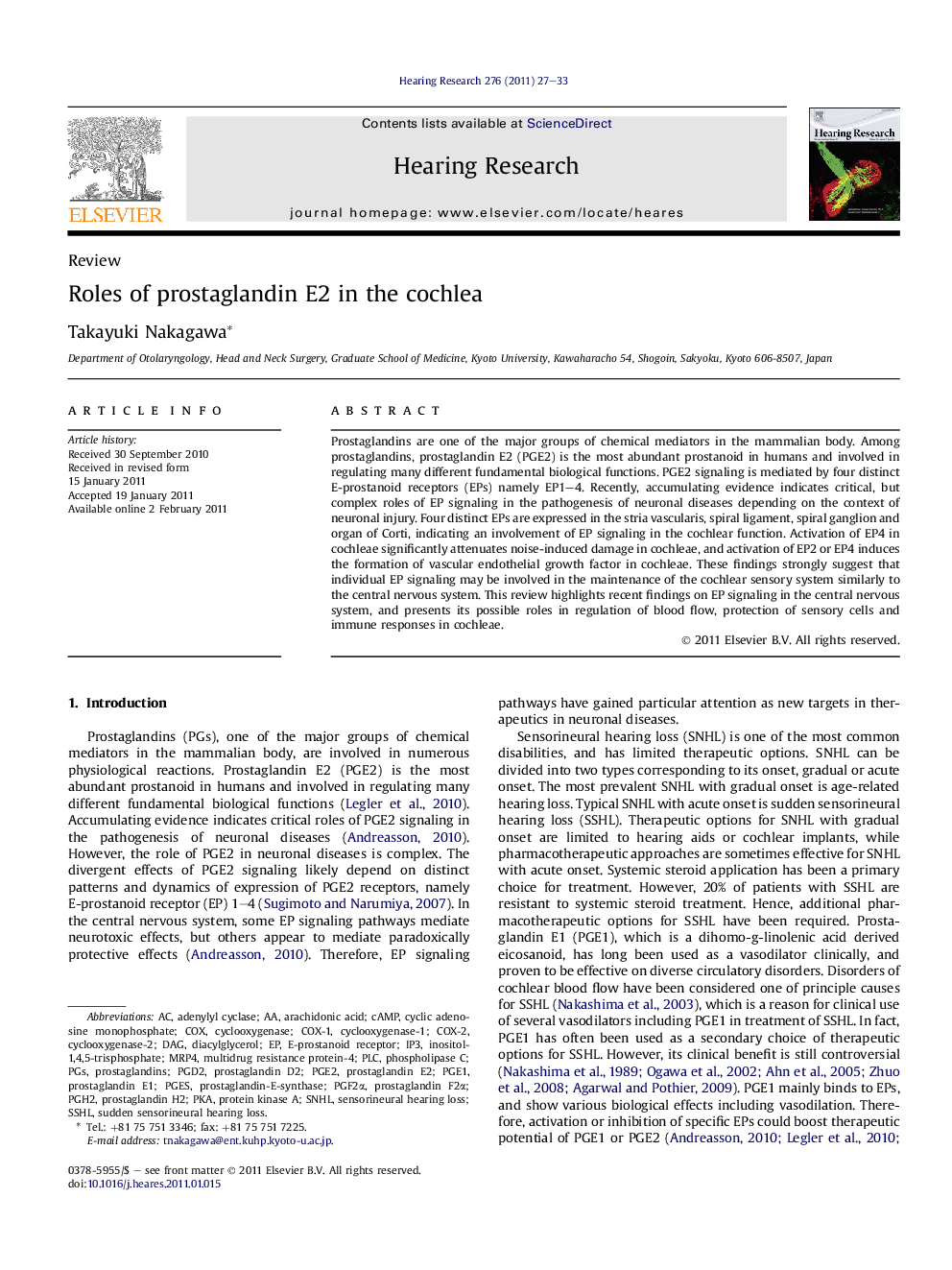| Article ID | Journal | Published Year | Pages | File Type |
|---|---|---|---|---|
| 4355569 | Hearing Research | 2011 | 7 Pages |
Prostaglandins are one of the major groups of chemical mediators in the mammalian body. Among prostaglandins, prostaglandin E2 (PGE2) is the most abundant prostanoid in humans and involved in regulating many different fundamental biological functions. PGE2 signaling is mediated by four distinct E-prostanoid receptors (EPs) namely EP1–4. Recently, accumulating evidence indicates critical, but complex roles of EP signaling in the pathogenesis of neuronal diseases depending on the context of neuronal injury. Four distinct EPs are expressed in the stria vascularis, spiral ligament, spiral ganglion and organ of Corti, indicating an involvement of EP signaling in the cochlear function. Activation of EP4 in cochleae significantly attenuates noise-induced damage in cochleae, and activation of EP2 or EP4 induces the formation of vascular endothelial growth factor in cochleae. These findings strongly suggest that individual EP signaling may be involved in the maintenance of the cochlear sensory system similarly to the central nervous system. This review highlights recent findings on EP signaling in the central nervous system, and presents its possible roles in regulation of blood flow, protection of sensory cells and immune responses in cochleae.
► Prostaglandin E2 signaling plays critical, but complex, roles in pathophysiology of neuronal diseases. ► Four E-prostanoid receptors are expressed in various types of cochlear cells. ► Activation of E-prostanoid receptor 4 in cochleae attenuates noise-induced hearing loss. ► Activation of E-prostanoid receptor 2 or 4 induces formation of vascular endothelial growth factor in inner ears. ► E-prostanoid receptors may be involved in regulation of cochlear blood flow and inflammation in cochleae.
